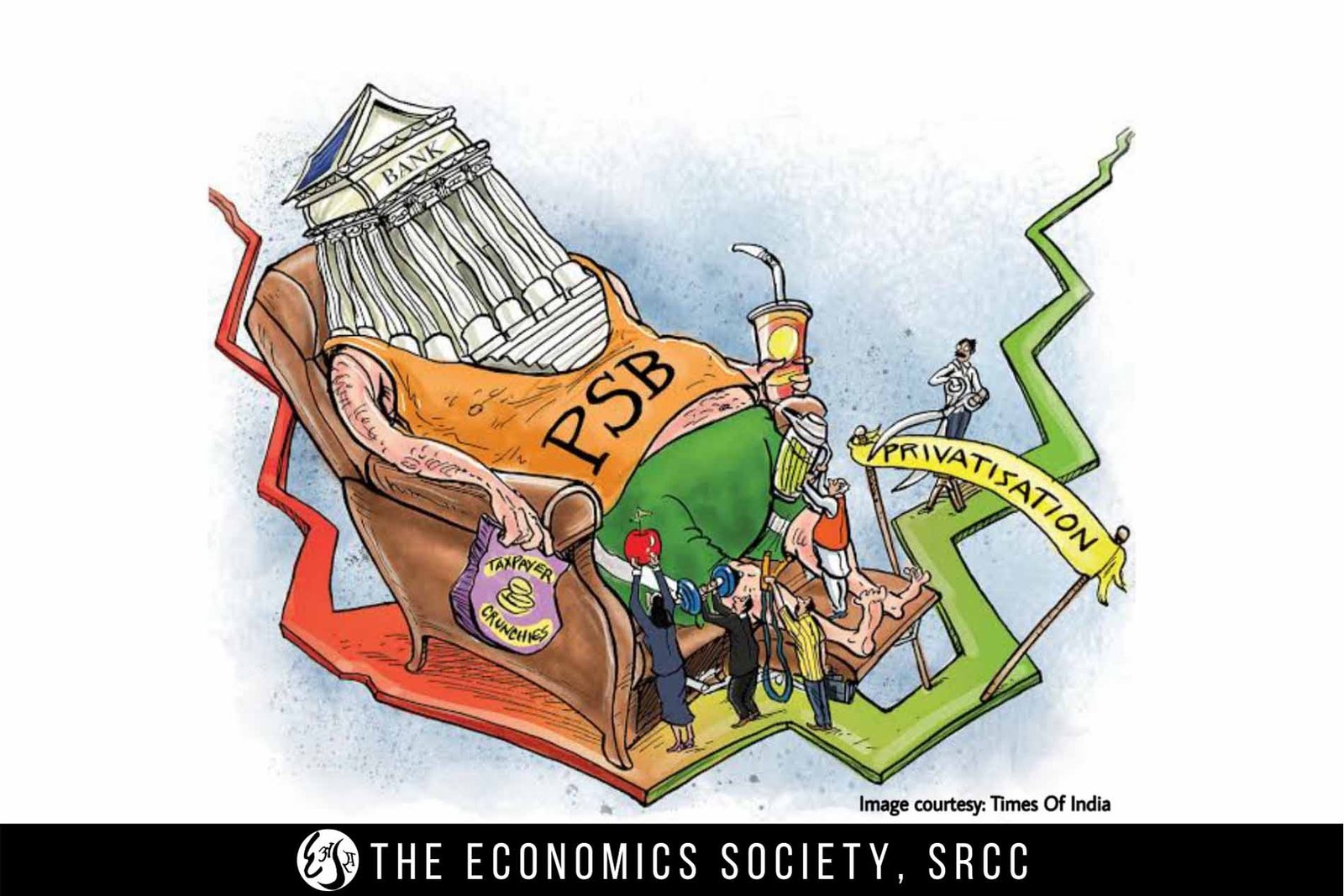
How Competition Manifests

Perfect competition is no competition. It is a bricolage of imagination of the neoclassical economists. By contrast, what is real—antagonistic and turbulent—competition within an industry, is theorised by the radical economist, Anwar Shaikh. But such Marxist economics is hardly part of the econ teaching-learning systems in India and much of the world elsewhere. It is well-known that neoclassical economists are obsessed with self-organising markets the coherence of which is supposed to be explained by the quasi-religious idea of an ‘invisible hand’. They also tell us the cock-and-bull story that the internal decisions and implementation processes of the firms are always optimal. In so giving us such contentless superstition, they fail to explain strategic choices with regard to competing, manufacturing and choosing employment structure and the links between them, as they are actually observed to be among firms in the diverse industrial landscapes of the world. Sociologists and anthropologists do not indulge in such economists’ dogmatic hallucinations. Here I focus on Frederic Deyo, a great sociology professor of the Binghamton University, who has given us a simple conceptual framework in order to research competition and its effects on industrial and labour practices.
Deyo’s critical institutionalist framework is well-grounded in the experiences of the automobile industry in different parts of the world. Faced with competition, firms may choose to compete in two ways: compete through static organizational and production flexibility (static flexibility, in short) or compete through dynamic organizational and production flexibility (dynamic flexibility, in short). Static flexibility involves short-term cost cutting through casualization, labour-law evasion, efforts to cut wages and benefits, and sweatshop outsourcing. Dynamic flexibility highlights the need for increased investments in human resource, technology and organizational reforms, along with technology assistance to suppliers/subcontractors in order to gain internal flexibility and improved quality of product.
Very interestingly, it is hypothesised that its flexibility enhancing human resource practices such as extensive broad-based training, some degree of shopfloor participation in quality improvements, in-process inspection and correction of problems, performance-based pay and a fluid deployment of workers to a variety of different tasks as dictated by changing needs and circumstances are most easily implemented where other employment conditions (including job security and stability, adequate wages and work conditions, information sharing and an equitable distribution of productivity or profit gains) foster trust, commitment and workforce stability. In practice, intensive competitive pressures may reduce rather than enhance the likelihood of substantial investments in long-term organizational, human resource and technological change. Such investments, it may be felt, give competitors a short-run cost advantage, or directly benefit competitors through externalities such as improved workers skills which may subsequently be expropriated by competing firms. Under such circumstances, other more cost-focussed measures may be preferred. In this sense, urgent cost pressures during periods of intensified competition may reduce the incentive to make investments needed for dynamic flexibility.
Moreover, in reality, firms have contending competitive demands and so they follow mixed strategies. That is, competition places multiple demands on companies and these various demands push sometimes in very different directions. Immediate pressures encourage static flexibility moves. Reforms for dynamic flexibility are costly and risky in the short run, while they may be appropriate and even superior in the long term. Most firms, in fact, pursue mixed strategies which seek simultaneously to achieve static and dynamic flexibilities. For example, firms may adopt policies among permanent employees and first-tier subcontractors which encourage stability, trust and long-term development in critical production processes. At the same time, they may pursue short-term, cost-focussed strategies among temporary or contract workers and among lower-tier subcontractors for routine, standardized production. External, static flexibility among temporary workers and some subcontractors functions here to compensate for internal rigidities such as relatively fixed labour costs in the core sector. The possibility for mixed strategies is enhanced where firms seek selectively to adopt elements of dynamic flexibility in the absence of strong governance pressure to generalize such policies to a broader range of production processes and suppliers.
This may be reflected in firms avoiding ‘high cost labour practices’ like tenured employment, seniority based remuneration and the provision of extensive welfare benefits and adopting ‘low cost labour practices’ like internal training, internal promotion, job rotation, small group activities, flexibility in job assignments and open lines of communications. Companies can resolve this dilemma of balancing short term and long term oriented restructuring in different ways. For example, the seemingly incompatible strategies can sometimes be combined by the use of skilled contract labour. Contract workers, after all, comprise a temporary workforce with generally varied experience and skills in the industry, thus providing both internal and external flexibilities. This is the first resolution. A different way to resolve this dilemma is by choosing institutional segregation of diverse strategies. This means that companies can go for parallel and simultaneous existence within larger firms of multiple labour systems as well as by tiered subcontracting in the production chain. Casual, contract and regular employees work together on the shopfloor under quite different employment conditions. In the parts subcontracting chain, the first-tier subcontractors are given strong encouragement to develop in-house design capabilities, high quality standards, and a highly trained workforce required for flexible production.
Lower-tier suppliers, while encouraged to improve quality, are pushed to a relatively greater extent to reduce costs. This difference in the nature of supplier assistance and support by the lead firms tends to reinforce existing differences in competitive strategies across supplier chain tiers. This is the second resolution. The third resolution to the dilemma could be as follows. Internal flexibility does not require contract labour option or the use of quality circles. Extensive reliance on temporary labour and autocratic management will do for internal flexibility. The fourth resolution is a hybrid flexibility that involves no substantial pro-active participation on the part of shopfloor workers. There is management autocracy in organizing work and deploying labour in conjunction with practices such as multiskilling, in-process inspection, just-in-time production and delivery, and constant improvement in process and product.
Lower-tier suppliers, while encouraged to improve quality, are pushed to a relatively greater extent to reduce costs. This difference in the nature of supplier assistance and support by the lead firms tends to reinforce existing differences in competitive strategies across supplier chain tiers. This is the second resolution. The third resolution to the dilemma could be as follows. Internal flexibility does not require contract labour option or the use of quality circles. Extensive reliance on temporary labour and autocratic management will do for internal flexibility. The fourth resolution is a hybrid flexibility that involves no substantial pro-active participation on the part of shopfloor workers. There is management autocracy in organizing work and deploying labour in conjunction with practices such as multiskilling, in-process inspection, just-in-time production and delivery, and constant improvement in process and product.
This kind of exclusionary, autocratic flexibility need not be less competitive than more participatory forms found elsewhere. And it suits well the industrial situation in the developing countries in contrast to that of the developed countries. We need to distinguish between the cases of industrial advance based on continued product and process innovation in industrially advanced countries and firms, and the cases as in developing countries in which such advance is rooted in local adaptation and implementation of technologies and processes developed elsewhere. The latter cases centre competitive success on shopfloor implementation, but the major role is played by the salaried engineers and managers, rather than by production workers per se. And, indeed, it may well be that the international transfer and adoption of already debugged product and process technology is less dependent on pro-active problem-solving and involvement on the part of the production workers than would be the case for innovation in new products and processes. From this it follows that factories in developing countries relying mainly on technologies developed abroad may require less of their shopfloor workers’ participation and empowerment. There is no need to institute the sorts of trust and commitment supporting employment practices associated with more innovative flexible-production systems found elsewhere. To conclude, only down-to-earth sociological and anthropological investigations, and not ivory-tower-religious theorisation, can throw light on these phenomena as they manifest, statically as also dynamically, in the real world.
Annavajhula J.C. Bose,
PhD Department of Economics, SRCC
References
1. Anwar Shaikh. 2016. Capitalism, Competition, Conflict, Crises. Oxford Scholarship Online. March
2. Frederic C. Deyo. Ed. 1996. Social Reconstructions of the World Automobile Industry: Competition, Power and Industrial Flexibility. Macmillan Press Ltd.


